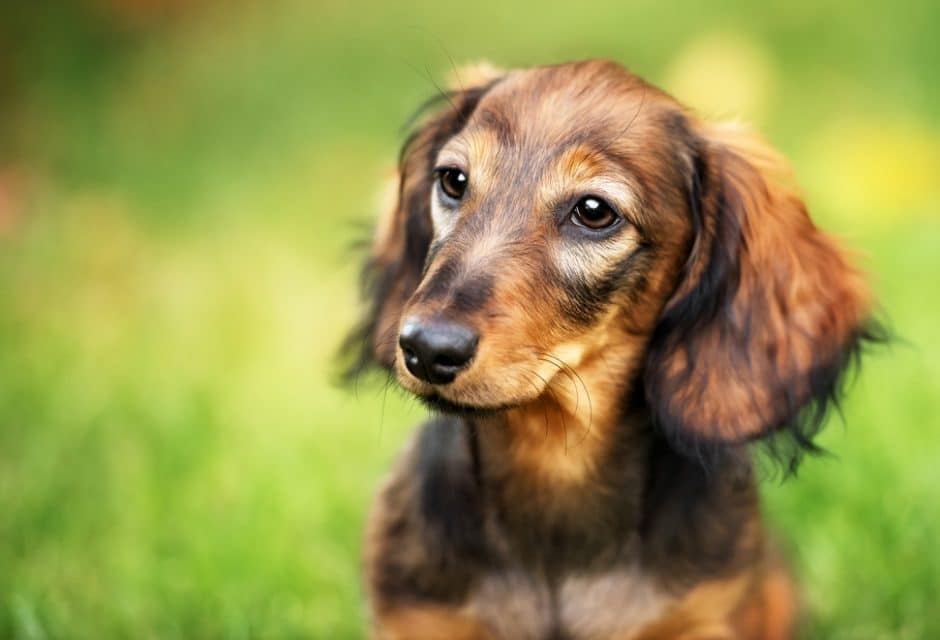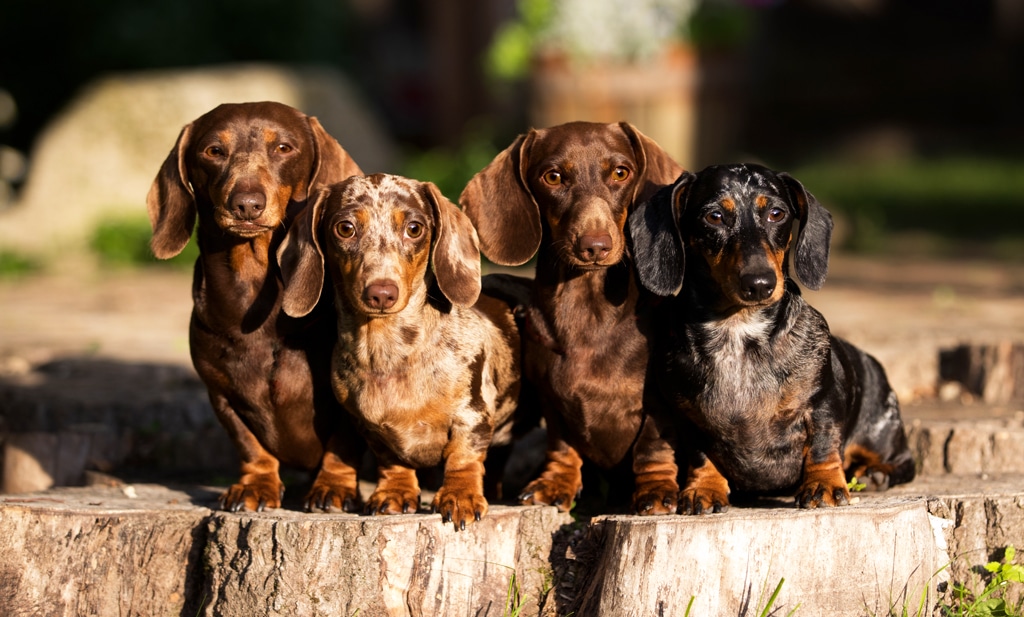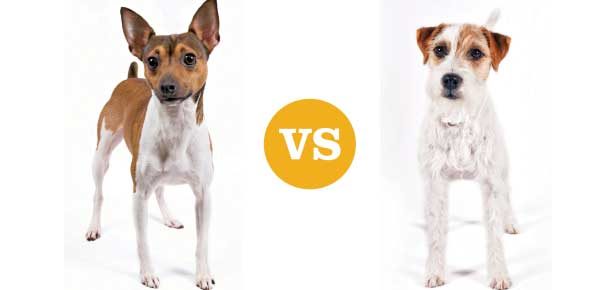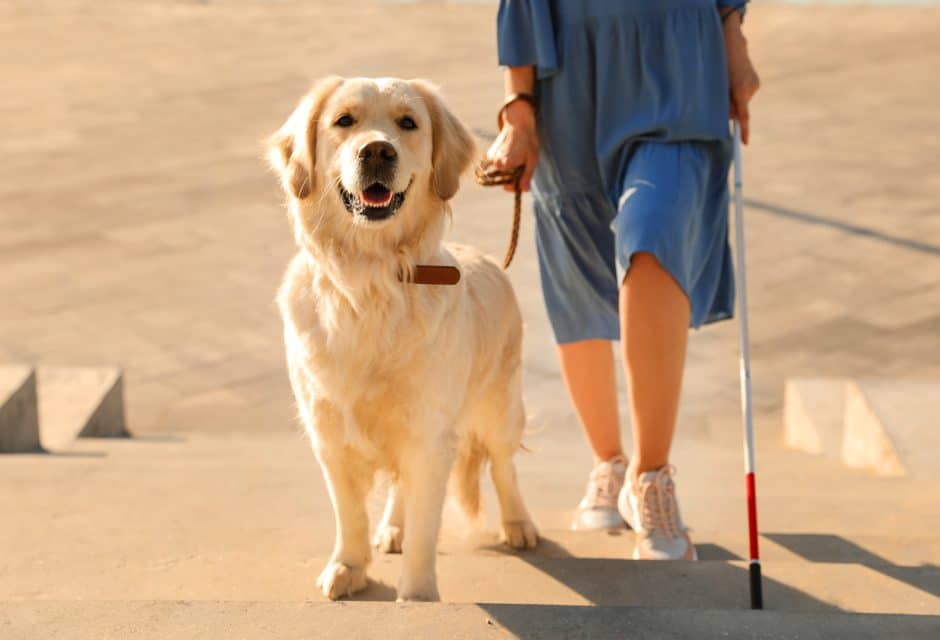

The Dachshund
Beyond wiener dog

No doubt about it: the Dachshund is probably the world’s most recognizable breed. From toddlers to octogenarians, everyone knows the funny little fellow with the sausage body, stubby legs, and waving tail, and the wiener dog has been used to sell everything from Slinky children’s toys to foot-long frankfurters. Images of Dachsies abound in cartoons, caricatures, and commercials.
As with any celebrity, however, the public pooch persona isn’t the whole story. Behind the dark sunglasses, behind the paw raised to block the paparazzi lenses, behind the tinted windows of the limousine, the Dachshund’s true nature is revealed. A hot dog he may be, indeed, standing tall at 7th place in American Kennel Club (AKC) popularity, but he’s no weenie.
This is one fearless performer who insists on doing his own stunts, whether going underground in small, dark spaces, chasing small game through thick brush, or climbing onto the table to steal food. According to both the British and US breed standards, he is “courageous to the point of rashness.” This characteristic can be traced back several hundred years to the Dachshund’s roots as a hunting dog developed by German foresters to track game and, more importantly, to locate and hold at bay animals that went “to ground” -those that sought safety in their burrows. It takes a fierce and determined dog to dive into a narrow, dark hole, find the prey by scent and sound, and then face down a badger or fox on his own territory.

Brusnikaphoto/Bigstock
As the huntsmen of the 18th century discovered the value of these low-slung yet energetic hounds, they began to breed coat varieties to suit different uses: the Dachshund was crossed with spaniels to produce the Longhaired Dachshund and with the Dandie Dinmont Terrier to create the Wirehaired. Small-sized Dachsies were probably always used to hunt rabbits and other smaller game and eventually became established as Miniatures of all three coat types.
Many of the royal houses of Europe favoured the feisty breed, both for work in the field and for companionship in the house, and partly as a result of this prestige, its popularity soared to the point that in 1913, it was one of the top ten dogs in the US. The royal seal of approval has not proved to be an unmixed blessing, however. Kaiser Wilhelm II, who led Germany during World War I, was a great Dachshund fancier and this, combined with the Teutonic name and origin of the breed, fueled an anti-Dachshund sentiment in the war years. In Britain and in the United States, Dachshund kennels were shut down, dogs were jeered at and sometimes stoned if they appeared in public, and, for a time, the poor Dachsie, seen as a symbol of the hated enemy, was even forced to assume a pseudonym: the AKC changed the official breed name from Dachshund to Badger Dog.
Never one to go down without a fight, the plucky Dachshund staged a dramatic return after the war, bouncing back into the limelight within a couple of decades. His popularity remains high, with the list of Dachsie devotees running from actors like Isabella Rossellini and Christian Slater, musicians such as Winona Judd, Tracy Chapman, and Madonna, to painters Picasso and David Hockney. Whether because of his winning personality or because of his unusual physique, the Dachshund has always been popular with artists, authors, and other creative individuals.
Most Popular Dogs in the US
According to the most recent AKC registration statistics
[1] French Bulldog
[2] Labrador Retrievers
[3] Golden Retriever
[4] German Shepherd Dog
[5] Poodle
[6] Bulldog
[7] Rottweilers
[8] Beagle
[9] Dachshund
[10] German Shorthaired Pointer
With the three coat varieties to choose from and two official sizes (Standards are usually from 16 to 32 lbs and Minis are under 11 lbs; dogs falling in the middle are sometimes called Tweenies) as well as a wide range of colours, from any shade of solid red or cream to sable, brindle, dapple, black and tan, or chocolate and tan, this is a breed that can fill almost any casting call.

Lilun/Bigstock
Fame, unfortunately, does not come without a price. That distinctive long body means one in four Dachshunds will develop disc problems. Technically called canine intervertebral disc disease (CIDD), it can result in a lot of pain for the dog and a lot of heartbreak and financial outlay for those who love her. Every potential Dachshund owner must recognize the serious possibility that their dog will suffer from CIDD and require expensive medical care. Once a Dachsie is part of a family, it is the owners’ responsibility to take all possible steps to prevent injury. This includes making sure the dog stays trim and fit while watching that she doesn’t engage in risky behaviours like jumping off furniture, standing up on her hind legs, or climbing too many stairs, all of which put extra strain on backs.
Another issue that owners must deal with is the common belief among Dachshunds that a warm, soft rug indoors makes a much better bathroom than the cold, wet world outdoors. Once they get this notion, it is hard to convince them otherwise, as they can be quite stubborn, so it is best to housetrain with a method that heads off accidents before they can happen.
True Dachs groupies consider these challenges to be a small price to pay for the joys of living with one (or more) of these unique dogs. Whether headlining as “The Sensational Sausage,” “The Wonderful Wiener,” or ‚ “The Fabulous Frankfurter,” this celebrated hound will always be ‚ “The Delightful Dachshund‚” to his fans.
» Read Your Breed For more breed profiles, go to moderndogmagazine.com/breeds
Join the newsletter and never miss out on dog content again!
"*" indicates required fields
By clicking the arrow, you agree to our web Terms of Use and Privacy & Cookie Policy. Easy unsubscribe links are provided in every email.





